Proven Techniques for Stink Bug Elimination
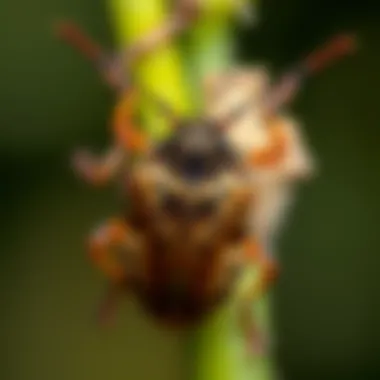
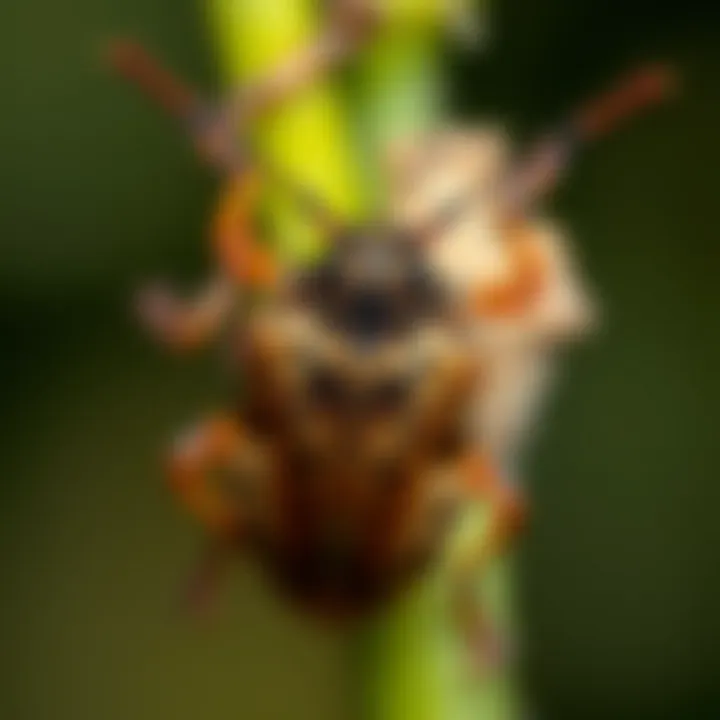
Intro
Dealing with stink bugs can feel like trying to plug leaks in a dam using just gum. These uninvited guests, known for their unpleasant odor and tenacious nature, can become a household nightmare if left unchecked. Understanding how to effectively eliminate stink bugs requires a blend of pest identification, prevention methods, and do-it-yourself (DIY) solutions that suit the home environment. This article aims to arm homeowners with knowledge that not only helps get rid of these bugs but also empowers them to keep them at bay for good.
Pest Identification
Identifying a stink bug is the first step in combating infestations. These pests belong to the family Pentatomidae and can be recognized by their distinct shape and color.
Common Household Pests
Stink bugs often resemble other shield-shaped insects, but their key identifier is the foul odor they release when threatened. Although they might not cause direct damage to structures or furniture, their presence is undeniably annoying. Some common household pests that can be confused with stink bugs include:
- Brown Marmorated Stink Bug: An invader from Asia, marked by brown hues and white bands on its antennae.
- Green Stink Bug: A native species featuring vibrant green color, often found in gardens and fields.
Signs of Infestation
Being aware of infestation signs can save a homeowner from a full-blown stink bug invasion. Here are some red flags:
- Presence of Dead Bugs: Finding dead stink bugs, especially in a warm place like the attic, might indicate an infestation.
- Unpleasant Odor: If the home suddenly smells like rotting vegetation or cilantro, it’s likely stink bugs are lurking nearby.
- Live Bugs Indoors: Spotting adult bugs inside, particularly during fall when they seek shelter for the cold months, suggests they have already made themselves at home.
"A stitch in time saves nine" – identifying problems early can prevent a larger issue down the line.
Prevention Methods
Once stink bugs are identified, it’s essential to enact preventative measures to avoid their return.
Environmental Modifications
Making environmental changes can go a long way in pest prevention. Consider:
- Removing Debris: Clear away fallen leaves and garden debris where stink bugs may hide.
- Plant Variety: Opt for plants that repel stink bugs, like marigolds or herbs such as basil and mint.
Home Maintenance Tips
Preserving the home’s integrity plays a crucial role in keeping these pests out. Here are a few tips:
- Seal Cracks and Gaps: Use caulk to seal windows and doors, preventing stink bugs from sneaking through tiny openings.
- Install Screens: Fine mesh screens on windows and vents ensure that bugs cannot enter while allowing fresh air to flow.
- Proper Ventilation: Ensure proper airflow to discourage conditions that attract pests.
DIY Pest Control Solutions
When prevention fails, it’s time to roll up your sleeves and tackle the issue head-on. Thankfully, there are several effective DIY solutions available.
Natural Remedies
Many homeowners prefer to avoid harsh chemicals. Here are some natural approaches to consider:
- Soap and Water Solution: Mixing water and dish soap in a spray bottle can kill stink bugs on contact.
- Essential Oils: Spraying a mixture of water and a few drops of peppermint or lavender oil can deter stink bugs due to their strong scent.
DIY Traps and Barriers
Creating traps can successfully reduce stink bug populations in the home. Some options include:
- Bucket Trap: Fill a bucket with soapy water, place it under a lamp, and the bugs will get attracted to the light before falling in.
- Sticky Traps: Use sticky tape near entryways to catch any bugs trying to invade.
In wrapping up this section, it's clear that combating stink bugs involves a practical understanding of how to identify and prevent them, alongside employing DIY solutions to control their population. By implementing these methods tailored for the home, it's possible to turn the tables on this pesky nuisance.
Understanding Stink Bugs
Grasping the concept of stink bugs is crucial for any homeowner dealing with these unwelcome guests. Understanding their biology, behavior, and life cycle not only helps in proper identification but also plays a pivotal role in effectively managing and eliminating them. With the right knowledge, individuals can better determine which strategies might work best against infestations, ensuring their homes remain comfortable and pest-free.
Biology and Behavior
Stink bugs are part of the pentatomid family, wearing their distinct shield-like shape as a badge of honor. Commonly, the most notorious among them is the brown marmorated stink bug. This species, with its mottled brown hue, can often be a formidable foe as it seeks warmth in your home during colder months. These critters are not merely passive; their behavior is dictated by the cycle of the seasons.
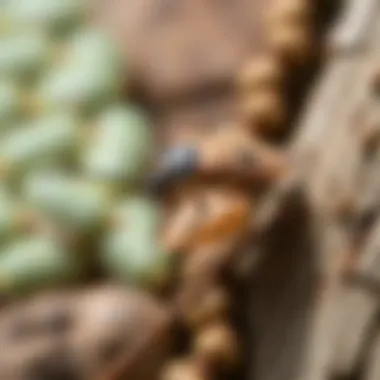
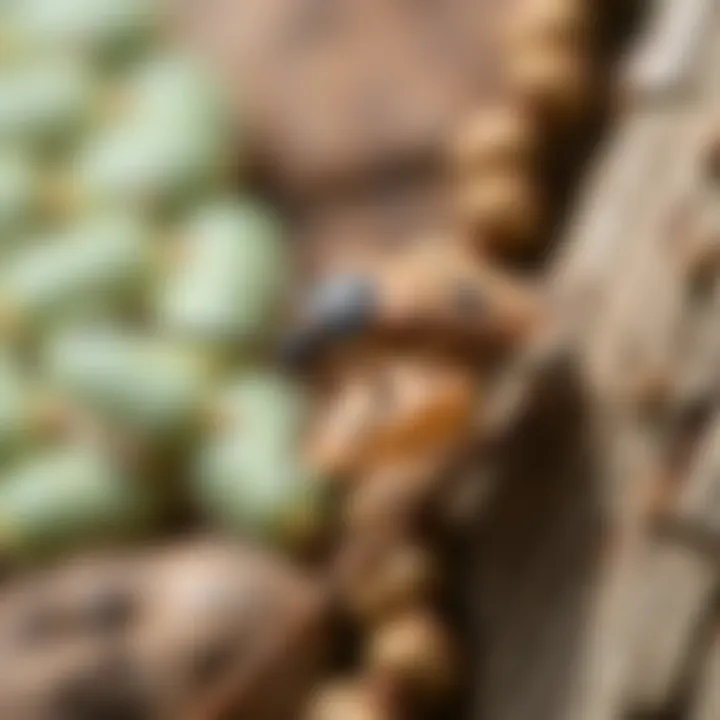
When the weather warms up, adult stink bugs emerge from their overwintering spots, eager to feed on crops and plants. They have piercing mouthparts that allow them to suck juices from fruits and vegetables. So, if you’re maintaining a garden, keep an eye out!
Typically, stink bugs display a strong attraction to light, especially during nighttime, which is when they are most active. This tendency can lead them into homes through minor openings. Understanding these habits is the first step toward effective control, helping homeowners know just when and where these pests might decide to invade.
Common Species of Stink Bugs
A few stink bug species frequently find their way into homes. Apart from the brown marmorated stink bug, the green stink bug is another prominent species. The green counterpart often stands out by its vibrant color, which can catch the eye of the unwary gardener.
There’s also the rice stink bug, which primarily targets crops and can cause significant harm to agricultural endeavors. Knowing these species relies on recognizing their distinct characteristics, which not only streamlines identification but also impacts the best practices for control.
Incorporating pest management techniques requires familiarity with these species. Homeowners should be vigilant in identifying stink bug types to tailor their eradication efforts effectively. Capture a glimpse of them in your garden, and act promptly to prevent larger issues.
Life Cycle Stages
Understanding the life cycle of stink bugs creates opportunities for intervention. A female stink bug can lay up to 300 eggs during a single breeding season. Typically, these yellow or green eggs are deposited in clusters on the undersides of leaves. Each cluster can turn into nymphs within a week or two, depending on the temperature.
Once hatched, nymphs resemble miniature adults but lack fully developed wings. As they grow, they shed their exoskeletons multiple times—a process known as molting. This development continues until they reach adulthood, usually within five to six weeks. Insights into this progression may prompt moisture management and elimination of potential breeding sites.
By controlling these stages of development through interventions, one can halt the cycle before it leads to a full-blown infestation.
"Knowledge is half the battle; understanding the enemy is the other half."
In this intricate dance of biology, behavior, and growth, wielding knowledge on stink bugs can guide anyone towards lasting success in pest management. Judicious action allows for a more pleasant living environment, spiraling through practical, sustained methods tailored to each unique infestation situation.
Identifying Stink Bug Infestations
Identifying stink bug infestations swiftly is crucial for any homeowner looking to protect their living space. Understanding the signs of an infestation can save time and resources, preventing further damage. Stink bugs may be small, but their impact can be significant if not addressed early. Homeowners need to familiarize themselves with specific indicators of these pests to take action promptly.
Signs of Infestation
Recognizing the signs of a stink bug invasion can feel like searching for a needle in a haystack. Yet, some key clues can make the task easier:
- Visible Bugs: The most obvious sign is the presence of the stink bugs themselves. They can often be found on windowsills, walls, or near entrances. Their brown or green shell can blend in, but a keen eye will spot them.
- Foul Odor: True to their name, stink bugs emit a distinct odor when disturbed. This scent isn't pleasant and can linger, which often makes their presence more noticeable over time.
- Egg Clusters: Female stink bugs lay hundreds of eggs, often on the underside of leaves. If you check your plants and notice yellow or white clusters, it could be a warning sign that these bugs are planning a takeover.
By knowing these signs, homeowners can keep an early watch and act fast.
Damage Caused by Stink Bugs
While stink bugs might seem harmless at first glance, they can wreak havoc on crops and indoor plants. Their sipping habits can harm plants like tomatoes, peppers, and other veggies in your garden. Here’s how:
- Feeding Punctures: They use their piercing-sucking mouthparts to feed on sap, which leads to yellowing leaves and even plant wilting.
- Fruit Quality: If stink bugs have been munching on fruit plants, the fruit may develop scars, making it look unappealing and less marketable if you intend to sell or share.
- Indoor Damage: Inside homes, these pests can invade electronics or insulation. While they don’t chew or damage material in the traditional sense, their droppings can lead to staining and odors.
Understanding the potential damage reinforces the necessity for early identification of these pests.
Differentiating from Other Pests
It’s important to be able to distinguish stink bugs from other common household pests. Misidentifying could lead to ineffective treatments and prolonged issues. Here's how to tell them apart:
- Shape and Color: Stink bugs have a flat, shield-like shape. Other pests, like shield bugs or leaf-footed bugs, may share some features but can differ in color and markings. Stink bugs are typically dull green or brown, while others might display more vibrant tones or patterns.
- Movement: Stink bugs tend to move slower than many other insects. Knowing their sluggish behavior can aid in identification during pest surveillance.
- Odor Identification: Nothing quite smells like a stink bug. If you find a bug emits a foul smell when touched, it’s likely a stink bug.
Differentiation is key. Misidentifying could lead to unsuitable control measures.
Grasping these differences can empower homeowners, guiding them toward effective solutions tailored to stink bugs specifically.
By establishing a clear identification process, you not only minimize damage but also streamline your pest control efforts effectively.
Immediate Control Measures
Dealing with stink bugs can feel like an uphill battle, but immediate control measures are crucial for keeping these pests from turning your home into their personal paradise. Addressing an infestation promptly is key to preventing it from escalating. While these bugs can be resilient, implementing the right strategies can significantly reduce their presence in your space. Below, we’ll explore the essential methods for immediate stink bug control, so you can take back your space.
Physical Removal Techniques
Physical removal is often the first line of defense against stink bugs. This technique involves simply catching and disposing of them before they invade further into your home. Using a handheld vacuum can be a straightforward approach, as those pesky bugs don’t stand a chance against a strong suction.
- How to do it: Grab your vacuum, aim for the bugs, and start sucking them up. Make sure to employ a vacuum bag specifically designed for this scenario, as it minimizes odors that can escape if they die in the vacuum.
- Considerations: It might be necessary to seal the vacuum bag tightly and dispose of it outside to prevent odors from permeating your home. Another alternative is to capture them in a jar using soapy water, which drowns them quickly without leaving a strong smell behind.
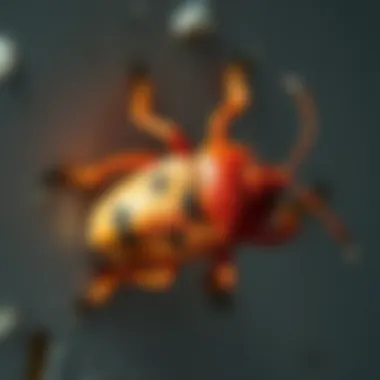
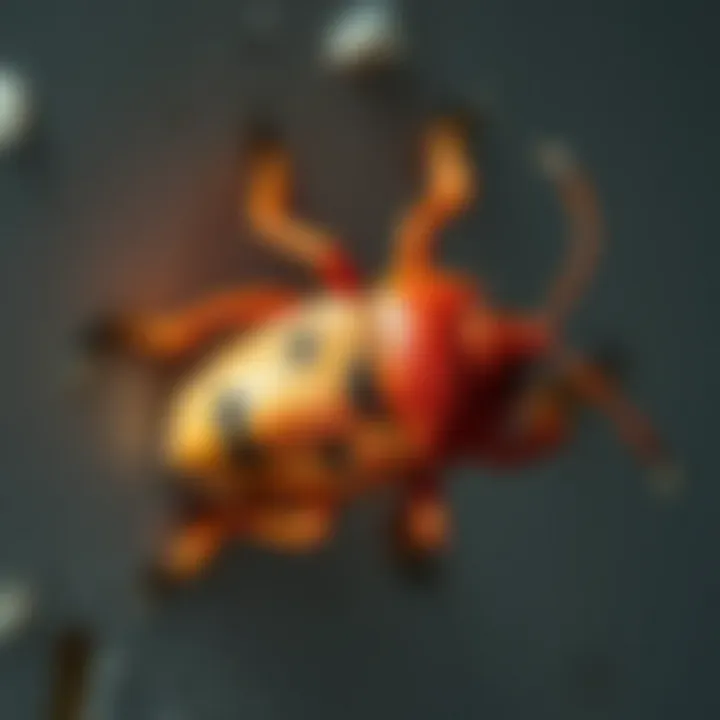
Insecticides and Sprays
When the bug population is overwhelming, it might be time to reach for insecticides and sprays. These chemical options come in handy for treating large infestations and can provide quicker results than manual methods.
Effective Chemical Options
Not all insecticides are created equal. Products containing pyrethroids are commonly used due to their effectiveness against stink bugs. One standout option is the Ortho Home Defense Insect Killer, renowned for its ease of application and potent formula that targets not just stink bugs but a range of other pests too.
- Key characteristics: The active ingredients in these sprays disrupt the nervous system of stink bugs, leading to quick elimination.
- Unique features: Many of these sprays come with an extended residual effect, meaning they can last a while, preventing reinfestation.
- Considerations: While effective, be mindful of your surroundings—especially if you have pets or children.
Safety Precautions
Using insecticides does come with its share of risks. Safety precautions are imperative to protect both humans and pets while still addressing your bug issue.
- Key characteristic: Always read the label. Understanding product safety information helps avoid unnecessary accidents.
- Unique features: Some sprays are specifically formulated for indoor use and have lower toxicity levels. These tend to be more suited for household environments.
- Considerations: It is vital to ventilate the area, wear gloves, and possibly a mask during application to minimize exposure to harmful chemicals.
Natural Remedies
For those leaning towards eco-friendly solutions, natural remedies provide an alternative without harsh chemicals. While they may take a bit longer to implement, some homeowners find success in using these methods.
Essential Oils
Essential oils have gained popularity for their natural pest-repelling properties. Oils like peppermint and neem have shown potential in driving away stink bugs due to their strong aromas.
- Key characteristics: They are usually safe to use around children and pets, making them a popular choice for households that prioritize safety.
- Unique features: Many essential oils contain compounds that not only repel bugs but also possess mild insecticidal properties.
- Considerations: Keep in mind that while effective, essential oils must be reapplied frequently, especially after rain or heavy cleaning.
Homemade Solutions
Harnessing the power of homemade solutions can be an appealing strategy. A simple concoction of water and dish soap, for instance, can effectively trap and kill stink bugs when sprayed directly.
- Key characteristic: These solutions are often cost-effective and allow homeowners to manage their pest problem without breaking the bank.
- Unique features: Since they’re made from common household ingredients, there's minimal risk of adverse reactions compared to harder chemicals.
- Considerations: Effectiveness can vary based on the concentration and application, so experimenting may be necessary to find the optimal mix.
Combining these immediate control measures can make a significant dent in your stink bug problem. Start with removal techniques, and layer in insecticides or natural remedies as necessary. This multifaceted approach not only addresses existing infestations but sets a strong precedent for long-term management strategies.
Preventative Measures for Stink Bug Control
Preventing stink bugs from invading your home is far more effective than trying to eliminate them once they have settled in. By turning the tables and focusing on preventative measures, you can protect your space and maintain a pest-free environment. Consider it like installing a solid lock before leaving your house instead of calling a locksmith after it’s been broken into.
The advantages of proactive strategies cannot be overstated. Not only do they reduce the likelihood of an infestation, but they also contribute to a healthier home environment and reduce the reliance on chemical treatments, which can have adverse effects on both health and the ecosystem. Below are several comprehensive approaches you can take to help keep stink bugs at bay.
Seal Entry Points in Your Home
Stink bugs are tricky little creatures that can sneak in through some of the tiniest cracks and holes. Inspecting your home for vulnerabilities is crucial. You might consider doing an inspection with the intent of sealing off entry points. This involves areas such as windows, doors, utility pipes, and electrical wires. A well-placed sealant or caulk can act as a robust barrier against these pests.
- Check Doors and Windows: Make sure that screens are intact and fit snugly.
- Fill gaps: Use caulk to fill any small cracks around doors and window frames.
- Install sweeps: Add door sweeps to the bottom of exterior doors to block movements.
By attending to these small details, you're making it harder for stink bugs to find their way into your home.
Maintaining Your Garden
Keeping your garden in check is another pillar of stink bug prevention. If your yard looks welcoming and full of food, it becomes a breeding ground rather than a deterrent. Taking the following steps in garden maintenance can help:
Pest-resistant Plants
Utilizing pest-resistant plants can significantly enhance your landscape’s ability to fend off unwanted guests, including stink bugs. These plants exhibit unique characteristics that deter pests due to their natural defenses. For example, marigolds are often favored because their scent is not appealing to several garden pests.
- Benefits: By choosing pest-resistant options, you minimize the need for chemicals, which can harm the surrounding environment.
- Consideration: Some pest-resistant plants can be less vibrant or may take longer to establish, but their benefits maximize your gardens’ integrity.
Competing with stink bugs not only involves repelling them but also creating a thriving environment that keeps them at bay.
Attracting Natural Predators
Emphasizing natural predators in your garden can balance the ecosystem and mitigate stink bug populations.
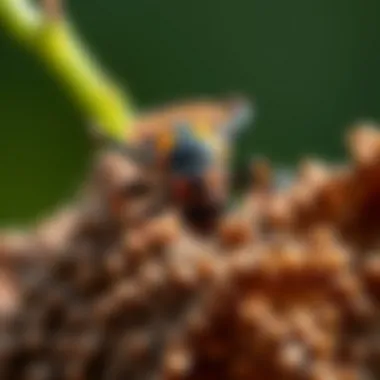
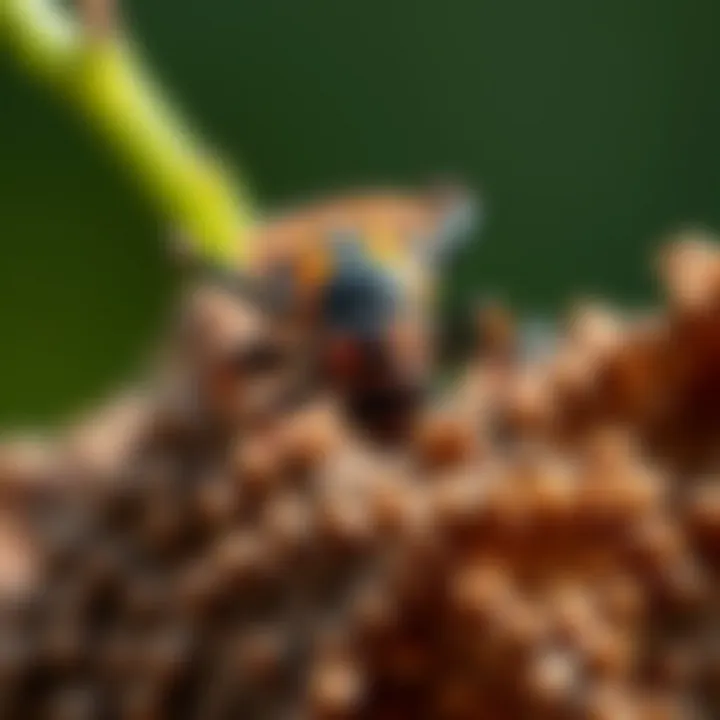
Encouraging birds, ladybugs, or even praying mantises can make your garden less amenable for stink bugs. These creatures naturally prey upon pests without causing collateral damage to your plant life. Not to mention, they can fit right into a well-maintained garden scheme without overwhelming it.
- Worthy Investment: Bug hotels can attract beneficial insects.
- Garden Variety: Adding a diverse range of plants can promote a natural habitat for these predators.
This approach not only provides an organic solution but also brings life and activity to your outdoor spaces.
Seasonal Prevention Strategies
Seasonal strategies vary widely but can be pivotal in keeping stink bugs from becoming unwelcome guests. They do tend to invade homes as temperatures drop, searching for warmth and shelter from the cold. Thus, timing is essential in your preventative measures.
- Autumn Preparations: As fall approaches, inspect your home for any entry points and seal them off.
- Winter Maintenance: Keep landscaping trimmed and tidy to avoid creating havens for stink bugs to winter.
By staying vigilant and adapting your prevention strategies according to the season, you're setting yourself up for a stink bug-free environment.
Engaging in these preventive measures builds a solid defense against stink bugs. By actively sealing entry points, maintaining your garden with pest-resistant plants, and attracting natural predators, you create an unwelcoming atmosphere for these unwanted guests. Remember, it’s not merely about controlling a pest; it’s about creating a sustainable environment that wards them off and protects your home.
Long-term Stink Bug Management Solutions
When it comes to dealing with stink bugs, understanding long-term management strategies is vital. These pests can be a nuisance, infiltrating homes and gardens, but sustainable solutions can provide a clearer path to reducing their populations. By adopting an integrated approach, not only do you fight stink bugs today, but you also take steps to mitigate future infestations. The significance of long-term management methods lies in their ability to balance efficiency and ecological integrity. With the right know-how, you can protect your living space while ensuring you're not creating further environmental issues.
Integrated Pest Management (IPM)
Integrated Pest Management, commonly referred to as IPM, envelops a holistic approach to pest control. It's not just about spraying insecticides and hoping for the best. IPM brings together various strategies, including monitoring pest populations, establishing thresholds, and employing cultural, mechanical, and biological methods. This ensures that interventions are only used when necessary, minimizing impact on beneficial species.
In this framework, the emphasis is on prevention. The more you can keep stink bugs at bay using proactive measures, the less you'll rely on reactive treatments. For instance, by maintaining healthy garden ecosystems that attract natural predators, you're stacking the odds in your favor. And when pest numbers do rise, informed decisions based on real data guide the appropriate control tactics.
Environmental Considerations
Impact on Ecosystem
Stink bug management should not exist in a vacuum. The choices you make regarding pest control can have rippling effects throughout the ecosystem. When you deploy chemical treatments indiscriminately, you risk harming beneficial insects, pollinators, and even soil quality. Conversely, adopting ecological methods can help maintain biodiversity, ensuring that beneficial species flourish alongside your efforts against the stink bugs.
One significant concern surrounding typical pest control is the alteration of food webs. When predators or pollinators are killed off due to chemical exposure, it jeopardizes plant health, thereby creating a cycle of larger pest problems. Integrating biological controls, like fostering populations of predatory insects, offers some safety nets against these pitfalls and supports a balanced ecosystem.
Sustainable Practices
Sustainable practices play a crucial role in effective stink bug management. These approaches aim for long-term solutions that are ecologically sound while remaining practical and efficient for homeowners. Using native plants is a prime example; they require less maintenance, support local wildlife, and deter pests more naturally than non-native varieties.
In addition, practices such as crop rotation and diversifying plantings can disrupt the life cycle of stink bugs, preventing them from becoming established. This method ensures that instead of continually facing infestations, your land can thrive sustainably. Integrating education on these opportunities can also empower homeowners to take meaningful and environmentally friendly steps toward pest control.
Professional Pest Control Services
When to Seek Help
Recognizing the right moment to call in professionals for stink bug control can make all the difference. If you've been battling these pests and feel that you've crossed swords without gaining ground, it may be time to reach out for expert advice. Professionals can offer a more nuanced understanding of the pest behavior, the right chemical or ecological control choices, and a targeted approach based on your specific situation.
The key aspect of seeking help is ensuring you're not merely passing the problem along. Professional services should include thorough inspections and recommendations tailored to your property. Bringing in specialists for recurrent infestations can save not just time and effort but also money in the long run, allowing for focused strategies that larger pest problems demand.
Evaluating Services
Choosing the right professional service is less about picking a name from a hat and more about conducting some diligent research. You’ll want to evaluate the reputation of the company, checking reviews and recommendations to assess their track record concerning stink bugs.
One unique feature of community-focused pest control services is their willingness to discuss non-toxic options. Many clients today are looking for solutions that align with their cravings for sustainability. Companies that provide multiple service options and solutions emphasize their commitment to effective, yet environmentally conscious management rather than just immediate profit. Evaluating these aspects can provide reassurance that your investment leads to lasting results.
Ultimately, the battle against stink bugs doesn't have to be lost. By adopting these long-term management solutions, you equip yourself with the tools to not only tackle present infestations but ensure that your living environment is protected for years to come.
Ending
In wrapping up our exploration of effective strategies for dealing with stink bugs, it's crucial to emphasize the importance of a multifaceted approach. Not only does tackling an infestation require immediate action, but long-term management is key to ensuring that these pests do not return.
A well-rounded understanding of stink bug biology and behavior equips homeowners to identify potential threats early. Recognizing signs of infestation can save both time and expense. When it comes to immediate control measures, employing a variety of techniques—from simple physical removal to more advanced chemical treatments—reinforces the effectiveness of your strategy. This combinative method not only addresses the pests currently in your space but also establishes a robust defense against future incursions.
Eco-Friendly Considerations
Moreover, the article brings to light sustainable practices in pest management. The integration of ecological methods, such as encouraging natural predators and using pest-resistant plants in gardens, stands out as a proactive means of maintaining a resilient ecosystem. Such strategies highlight the importance of thinking long-term rather than merely reacting to a problem as it arises.
"Nature is adept at balancing itself, and our role should be to support that equilibrium rather than disrupt it.”
Lastly, professional pest control services represent a corner of this discussion. Knowing when to call in the experts, and being able to evaluate their services critically, adds another layer of security in the battle against stink bugs.
In summary, an effective plan for the permanent elimination of stink bugs draws from a thorough understanding of both immediate and planned strategies. It delivers not just a path to reclaiming your home from these pests but also contributes to a broader conversation around sustainable and responsible pest management. Embracing these methods, housewives and homeowners alike can shield their homes from unwanted visitors while staying aligned with eco-friendly practices.















